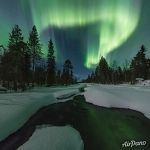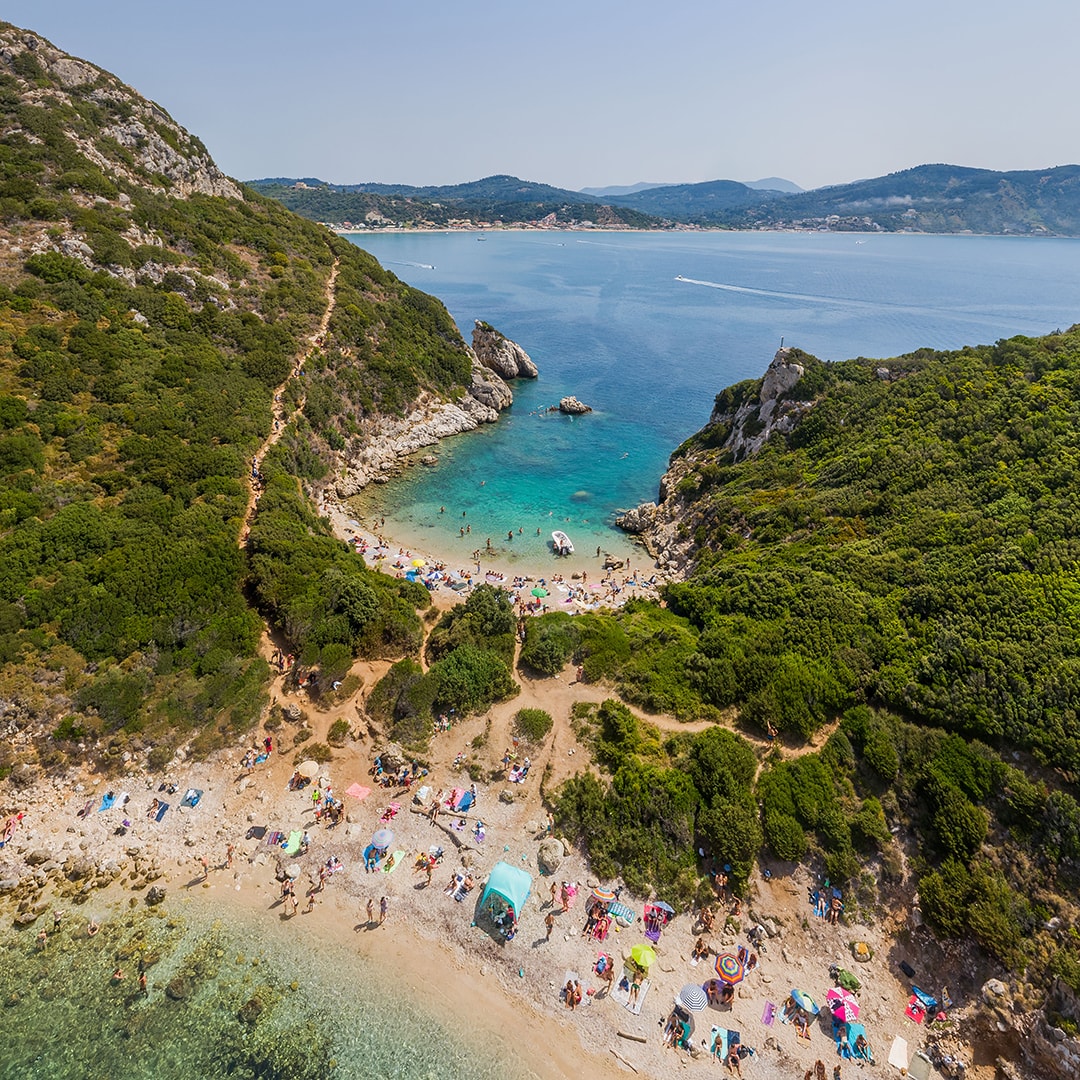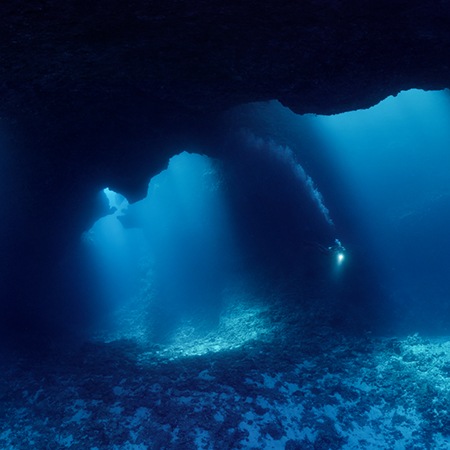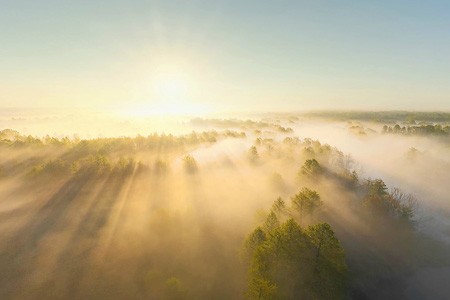Northern lights on the Kola Peninsula
The bright glow of the upper layers of the atmosphere visible from the ground in the winter season is commonly called the northern lights. This is not entirely true: you can see it near the South Pole, so it is more correct to say polar lights. However, there are very few land areas in the southern part of the world, so the best places to admire the colorful night sky can be found in the Northern Hemisphere.

The Kola Peninsula is amongst the top 10 most successful spots, and this is where the new AirPano virtual tour was filmed. It is very difficult to capture fantastic colors in the sky and sometimes it turns into a real adventure! This shooting was planned awhile ago, but out of the whole team, only two directors were able to take part in this expedition: CEO and technical director, Sergey Semenov and Sergey Rumyantsev. Both of them are also leading landscape photographers.
Sergey Semenov shared his impressions about this expedition.
Both I and my colleagues from the AirPano team have been hunting for the polar lights for several years. Most often we do it in March: it is not as freezing as in January or February, and the equipment can work longer in the cold. The disadvantage of the journey made in March is the unstable weather. Even if there is a flash in the sun creating the glow of the atmospheric layers, the sky can be covered with clouds, and then the filming does not make sense. To avoid this, we monitor the weather in advance, being ready to start at any moment. Under favorable conditions, we immediately take off, leaving for a couple of days. Therefore, I call this activity "hunting."

The closest available and inexpensive destination for us is Murmansk. The flight takes only 2.5 hours, and if the forecast is good, you can buy a ticket in the evening and stand at the shooting point the next day. The fact is that the most accurate weather forecast for this region is Norwegian: it gives one hundred percent hourly accuracy for a day ahead! And the polar lights tracking software that I personally use is Aurora Pro; it also sends notifications about the approaching flash and the power it will have.

For warm countries, we often use Sony equipment, but shooting in the north is specific. According to many years of equipment testing and optimizations, we opted for a so-called "Gorynych": a specially designed tripod head on which Nikon D810 cameras are attached. They are characterized by high resolution combined with excellent frost resistance.

This time we also decided to try a "newbie": the Insta360 TITAN camera. The tests run in Moscow at a temperature of -25 ° C showed an excellent result: more than 1000 frames!
Thus, we flew to Murmansk, rented a car and drove west, to the place with several winding rivers and photogenic "marshmallows" on stones and snow-drifted riverbanks. We learned about these picturesque spots from a photo guide based in the Kola Peninsula, Sergey Korolev. Perhaps, he has the best photographs of these places that I have ever seen! If you want to take some pictures there, contact him!

Having quickly accommodated at the camp, we changed into our "snow" clothes and went on reconnaissance before dark to find a suitable site for placing cameras. The main problem with panoramic time-lapses is the very long time for shooting: it takes about two hours to make a 30-second final video. It is also very important that no flashlights, other photographers, passing cars and other objects should enter the frame - and not just at one point, but everywhere around the camera. During the shooting, it stands alone in the forest and we, in order not to spoil the picture, either hide in the car or go to other spots. Besides, we need to calculate, or rather even guess, the time of the flash. After all, if it has started when the camera is not shooting, then the result will be only a small piece for 2-3 seconds in the final video. So, in this genre, it's especially important to plan everything in advance!

And even despite such careful preparation, surprises can await at every corner. It happened this time, too. Having arrived at the first point, I noticed an interesting piece of frost that turned into an ice "bridge" across the river with lace edges and figured icicles. I went to the middle of it, got down on my knees to take a close up of this beauty, but at that moment the ice broke off, and I dived into the water like a swimmer from the side of the pool!

The water was only knee-deep, but I had a very expensive camera in my hand, which in no case could get wet, so I took the heat and managed to save the camera. When my colleague Sergey Rumyantsev heard me crying for help, he saw a funny picture: I was lying on my back in the river, the water was flowing into my collar, into my boots, into my ears, while two hands with a camera and a phone proudly rose above its surface!
Then we went to the camp where I changed my clothes and hung up my clothes to dry: everything from a beanie to underwear was wet. Finally, we went on a "combat" shooting in the night. The moral is: even on short trips, make sure to have two sets of winter clothes!
We arrived at the shooting point at about 9 pm: it was not yet completely dark, but we could already see the first greenish flashes in the sky. The dense clouds scared us a little, but an hour later they dissolved. We set up cameras and got ready for the show!
Having started in the form of a small greenish arch near the horizon, the radiance burst into large, beautiful stripes. Then they began to wriggle, and purple feathers appeared on them, which literally ran along the winding trail of the radiance. It twisted into rings, disappeared in one place and appeared in another: both near the horizon and directly overhead. Finally, a bizarre green ornament filled the entire sky. It was amazing: perhaps it was one of the strongest auroras I have ever seen!

At about midnight, after the first flash, we changed the batteries on the cameras, made sure that the recording was successful, and "went" on hold. The forecast said that it should shine all night. We waited until there was another little shining, and then a pause again ... Other photographers that we met on the same river, travelled around the Kola peninsula for the second week and never saw any lights. They decided to end at this point, but we did not give up. And at about four in the morning, another flash came: it was a little weaker than the first but still magnificent and spectacular.

Satisfied and exhausted, we returned to the camp and went to bed at about 6 am, with the first rays of the sun. At this, our main task was completed, and we were about to go home, but no such luck! The north did not let us go. Tickets from Murmansk to Moscow were sold out!
Well, we had to stay one more night and that prompted us to explore new places. Unfortunately, we did not have snowshoes and we went to the virgin lands, just with our trousers over the boots. We do not recommend following this example: the snow was either knee- or waist-deep, and our movement can be compared to partisan crawls mixed with ballet steps and panda waddle!

Finally, we crawled to a small cape with dumpy Karelian pines on a frozen lake, which we first saw from the road. Here we set up cameras and filmed the sunset landscape, as well as the very beginning of the aurora, its first appearance in the sky. As the forecast predicted, it was weaker than the day before, but we completed the filming and after midnight moved to the car dreaming of getting warm as soon as possible and going to sleep. But no such luck, again! The north continued to hold us, making another attempt. This time the keys were in the ignition and the car itself was locked!
Just imagine: it was freezing at -10 ° C, there were 30 kilometers to the nearest settlement and no passing cars on Monday at 1 am. After the first ten shocking minutes, Sergey Rumyantsev remembered that the lock on the tailgate was unstable: sometimes it closed, sometimes not. And with the help of the mailbox key, which luckily was found in his pocket, as well as with a methodical tapping on the lid, a miracle happened: the trunk swung open! Well, then it was a mere formality: it was a hatchback, so we easily opened the rest of the doors and in half an hour we were at the campsite. So if your car got closed, call the AirPano team!
The next morning, we got up early to get to the airport without incident, return the rental car and leave for Moscow. The north finally gave up and let us go. Even though over the past three days we slept only three times for 5 hours, we did an excellent job there!

I will add some information about photographic details. The moon was shining very brightly, but that's what they were counting on. For 360 ° cameras with their view in all directions, the evenly spread illumination of the scene is very important. When the sky is bright with colors, the ground and foreground are usually very dark but the moon helped us here: it illuminated the snow and trees well. Moreover: it made it possible to shoot at relatively short, for night photography, exposures (4-5 seconds). This way the radiance turned out to be more textured, the shooting time was reduced without prejudice to the number of frames, and it was possible to shoot longer on one battery charge.
And in addition, thanks to the bright moon and bright lights, we were able to shoot at ISO1600 and even at ISO800!

Text by Sergey Semenov. Photos by Sergey Semenov and Sergey Rumyantsev
9 April 2021
Read more
Photogallery Northern lights over a non-freezing river
Northern lights over a non-freezing river
 Sunset on the Kola Peninsula
Sunset on the Kola Peninsula
 Aurora
Aurora
 Northern lights over a non-freezing river
Northern lights over a non-freezing river
 Nature miracle
Nature miracle
 Starry night
Starry night
 Aurora over the river with marshmallows
Aurora over the river with marshmallows
 Flash of aurora over the river
Flash of aurora over the river
 Rough river in winter
Rough river in winter
 Magic sky
Magic sky
 Aurora over the river with marshmallows
Aurora over the river with marshmallows
 Northern lights over a non-freezing river
Northern lights over a non-freezing river























